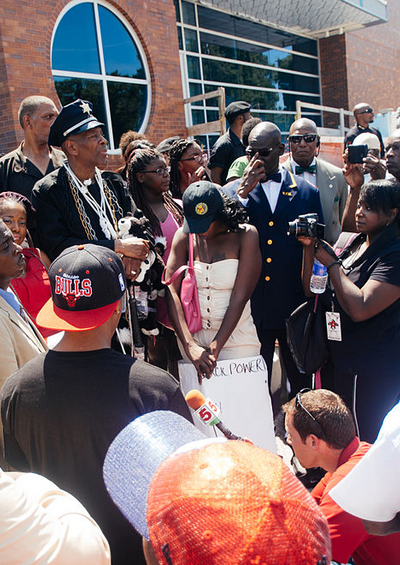Racial Disparity in the United States
Why are black Americans protesting across the nation?
May 2, 2015

Violent clashes between black Americans – particularly young black men – and police in cities such as Baltimore, Maryland, and Ferguson, Missouri, call into question how much progress the United States has really made in fulfilling the promise of equal rights for all Americans. We ask:
Which of the following statements about black Americans are true today?
A. Unemployed at twice the rate of white Americans.
B. More likely to leave high school without a diploma.
C. Have significantly less wealth.
D. Far more likely to be victims of serious violent crime.
A. “Unemployed at twice the rate of white Americans” is correct.
One of cornerstones of the Civil Rights Act of 1964 was the creation of the Equal Employment Opportunities Commission in the United States. It is tasked with eliminating discrimination in hiring based on race, as well as other forms of workplace discrimination.
Even so, according to an analysis by the Economic Policy Institute, the unemployment rate for black Americans since the 1960s has been between two and 2.5 times higher than that of white Americans.
This gap is apparent in the most recent unemployment statistics. In March 2015, the overall U.S. unemployment rate stood at 5.5%. However, the unemployment rate for white Americans was 4.7%, while it was 10.1% for black Americans.
In cities such as Baltimore, where African Americans have clashed with police, the situation is even bleaker – especially for young black men. According to the U.S. Census Bureau data for 2013, the unemployment rate for black men between the ages of 20 and 24 was 37%. That is almost four times higher than the 10% unemployment rate for white men of the same age.
B. “More likely to leave high school without a diploma” is correct.
From the 1960s to the early 2010s, there has been a marked decrease in the gap between white and black Americans completing a high school diploma. However, there is still a significant gap between the races in terms of on-time graduation.
For the graduating class of 2012, 20% of U.S. teenagers did not finish high school with their peers. Among white Americans, only 14% did not finish on time. By contrast, 31% of black students did not finish with their peers.
Finishing high school on time can be more difficult for teen mothers and for children in single-parent households. Among black women who bore a child in 2011, 68% were unmarried, according to Census Bureau data. The figure for white women was 26%.
C. “Have significantly less wealth” is correct.
As of 2011, the median household in the United States had $68,828 in net wealth. This means that half of U.S. households had higher net wealth (assets minus liabilities) and half lower.
As with measures of unemployment and educational achievement, this overall number masks significant differences among racial groups.
The median white household in the United States had net wealth of $89,537, according to Census Bureau data. In contrast, the median black household had net wealth of only $6,314 — or just 7% of the median white household.
The median black household had much less debt than white households — $35,000 compared to $75,000. But this largely reflects the fact that black households carry much less mortgage debt than white households. Homeownership among white households is 73%, compared to 43% for blacks.
However, black households carry significantly more debt relative to their household assets than white households.
D. “Far more likely to be victims of serious violent crime” is correct.
In 2012, 11.3 of every 1,000 black Americans age 12 or older were victims of serious violent crimes (rape or sexual assault, robbery or aggravated assault), according to data from the Bureau of Justice Statistics. The victimization rate for white Americans was nearly half that — 6.8 per 1,000 people.
Black Americans — especially black males — are also far more likely to be victims of homicide. Black males account for about 6% of the U.S. population, but 43% of the country’s homicide victims in 2011, according to the FBI.
Black Americans are also disproportionately incarcerated in the United States. According to BJS data, they accounted for 39.4% of the U.S. federal, state and local jail population in 2009, more than three times their 12.2% percent share of the overall population. By contrast, white Americans accounted for 34.2% of incarcerated Americans, just over half their share of the population (63.7%).
Since the 1980s, the U.S. Congress has required stiff mandatory jail terms for drug offenders, which is one of the key reasons behind the significant and disproportional increase in the incarceration rate for black Americans.
Takeaways
The unemployment rate for black Americans since the 1960s has been 2-2.5x higher than that of white Americans.
In March 2015, the unemployment rate for white Americans was 4.7%, while it was 10.1% for black Americans.
In 2013, the unemployment rate for black men between the ages of 20 and 24 was 37%; 4x higher than for white males.
In 2012, 11.3 of every 1,000 black Americans age 12 or older were victims of serious violent crimes.
Black males account for about 6% of the US population, but 43% of the country’s homicide victims in 2011.
